TThe National Spatial Development Framework (NSDF) is a strategic long-term spatial plan towards 2050. The NSDF is legally mandated by the Spatial Planning and Land Use Management Act, 2013 (SPLUMA), and has to be aligned with the 2030-National Development Plan (NDP). The framework development was managed by the Department of Agriculture, Land Reform and Rural Development (DALRRD) and the Department of Planning, Monitoring and Evaluation (DPME). The CSIR’s Inclusive Smart Settlements and Regions (ISSR) impact area was part of the project team led by the University of Pretoria’s Town Planning Department..Read more >>
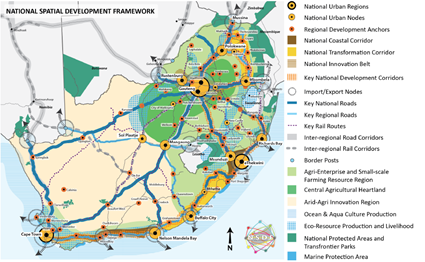
The CSIR Functional Town Typology has been developed with the specific purpose to provide a fine grained, but nationally comparable overview of regional scale settlement patterns and trends. The latter provides a mechanism to identify, calculate and analyse a set of development information and trends pertaining to the range of towns and cities, as well as high density rural settlements across South Africa. It enable profiling of specific settlements and or the analysis of demographic and economic trends of a set of settlements with similar scale and type. The typology enables calculating the population and the economy of functional town areas, comparing town areas relative to non–town areas and for exploring regional and spatial inter-relations. It also enables temporal and spatial comparison at a regional scale of settlements independent of municipal boundary demarcation.Read more >>
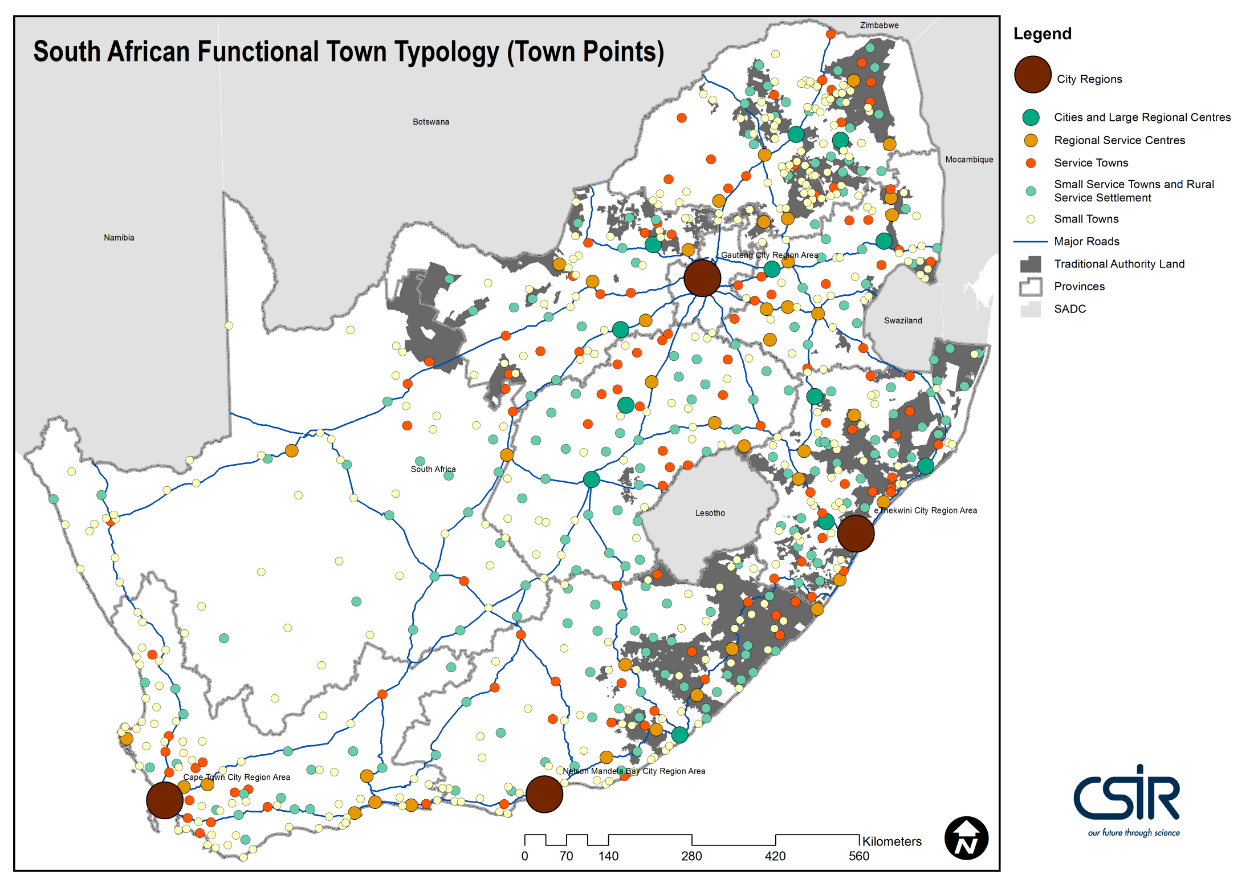
The Anglo American (AA) Municipal Capability & Partnership Programme (MCPP) is a collaboration between AA, the Department of Cooperative Governance and Traditional Affairs (CoGTA), the Council for Scientific and Industrial Research (CSIR, as implementing partner), and participating mines joining forces with participating local municipalities to improve service delivery and tackle current and future development challenges peculiar to mining towns and regions. Challenges include the increased service demands from fast growing settlements, rising socio-economic vulnerability of households, and a complex regulatory and intergovernmental environment. Read more...
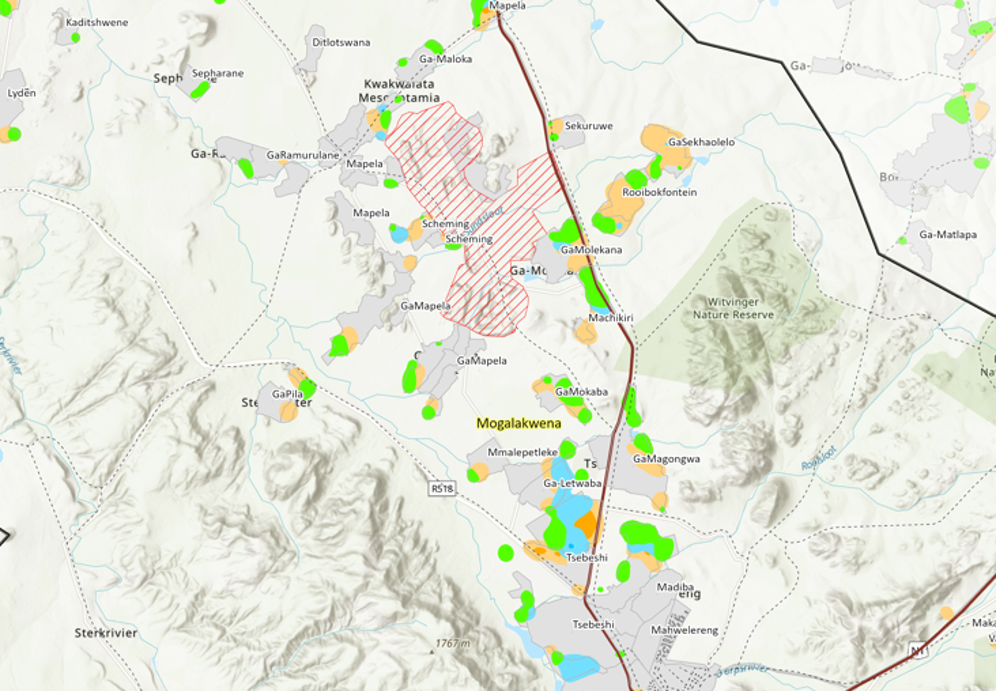
The effective delivery of social services in rural South Africa remains a major challenge especially outside of metropolitan areas and on the urban periphery. On the supply side, challenges include the poor planning and location of facilities, uncoordinated government investment and the need to ensure sustainable and effective service delivery within a resource scarce context. On the demand side the challenges are to provide facilities in a manner that is spatially just and equitable within the context of fast growing town and settlement population, with changing demographic profiles, extensive sparsely populated areas living in different settlement configurations and patterns as well as varied levels of mobility and access to social facilities.. Read more >>
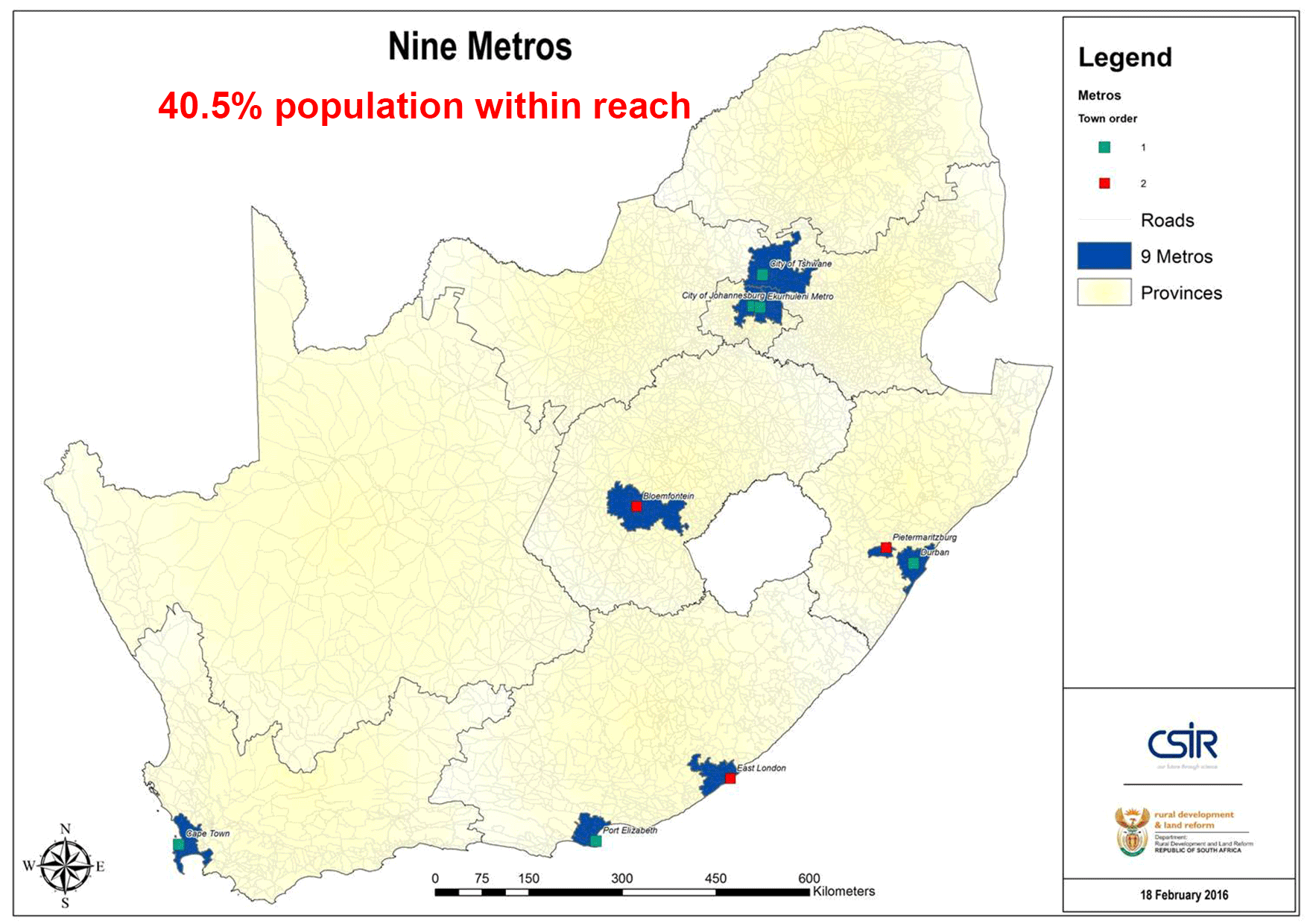
Spatial targeting, prioritisation and alignment are seen as key to national imperatives of addressing poverty and inequality (NDP, 2011), to improve quality of life and access to services as set out by international and national targets (SDGs), as well as to achieve the principles calling for spatial transformation, sustainability, efficiency and social justice (SPLUMA, 2013). Within this context, the call for social justice with respect to constitutionally provided human rights provides a clear basis to ensure that people are not denied access to essential services because of where they live. A decade of research on social facility provision standards undertaken in conjunction with spatial analysis to inform location planning clearly demonstrates the operational challenges to provide a full range of social facility types in all parts of the country with the same intensity or service levels in a sustainable, economically viable and efficient manner. Read more >>
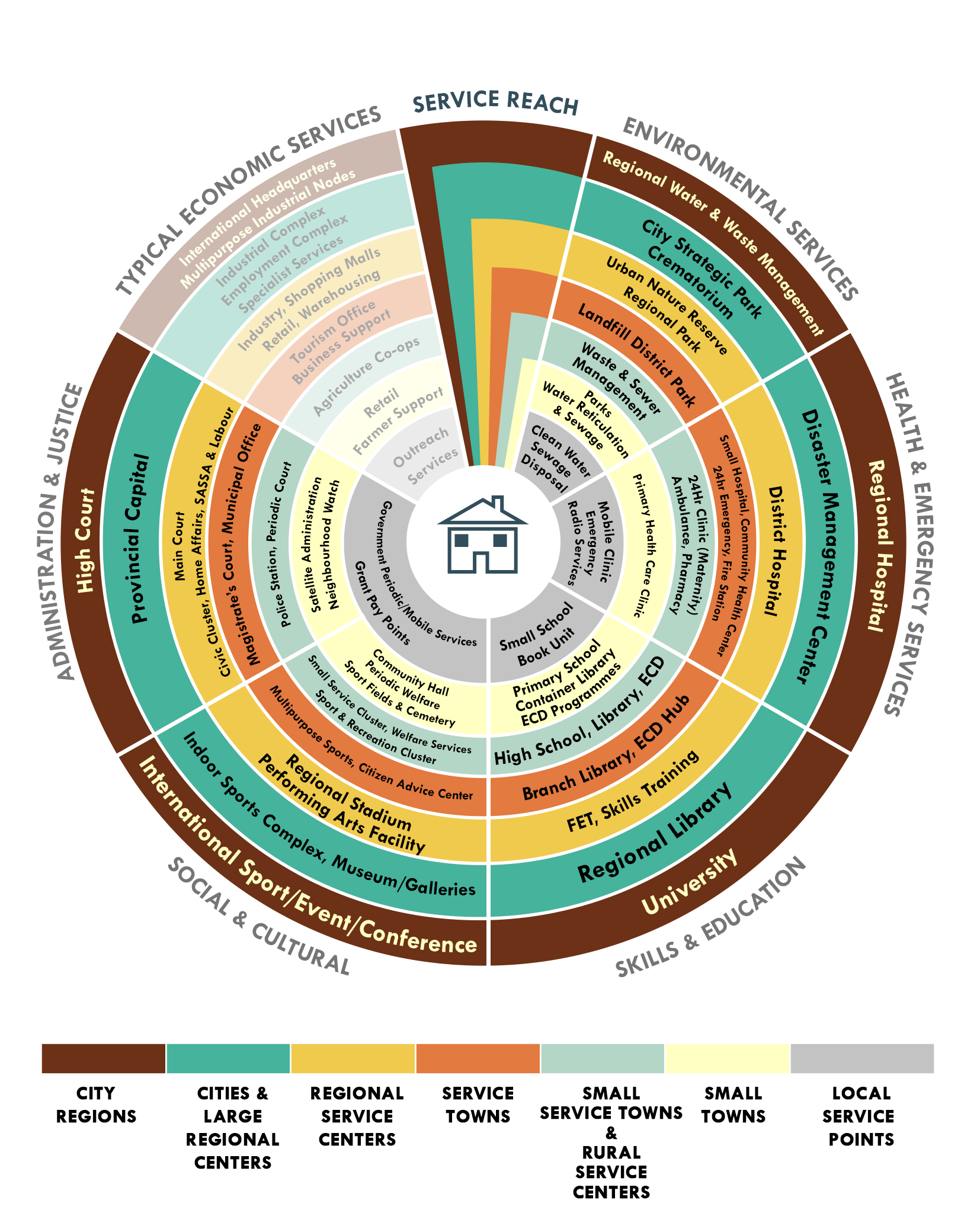
The use of a fine-grained uniform spatial resolution to depict economic and population change enabled the CSIR team to create population and economic production change indicators for the nine largest cities in South Africa. The July version of this newsletter reported on the latest State of the Cities Report (SOCR) 2016 release and the assistance provided by the CSIR in developing a number of spatial indicators to measure spatial change, and report on levels of growth and spatial transformation at the sub-city level. The urgency for spatial transformation and need for indicators to track spatial outcomes is clearly highlighted by the SOCR (2016) and the Spatial Planning and Land Use Management Act, 2013. Read more >>
The Nelson Mandela Bay Metropolitan Municipality (NMBM) and the CSIR have been collaborating on a project sponsored by the Department of Science and Technology to establish an Urban Simulation Model for the NMBM since December 2009. The project set out to harness information and communication technology to establish an Urban Simulation Model for South Africa to support integrated planning, development and service delivery. Read more >>
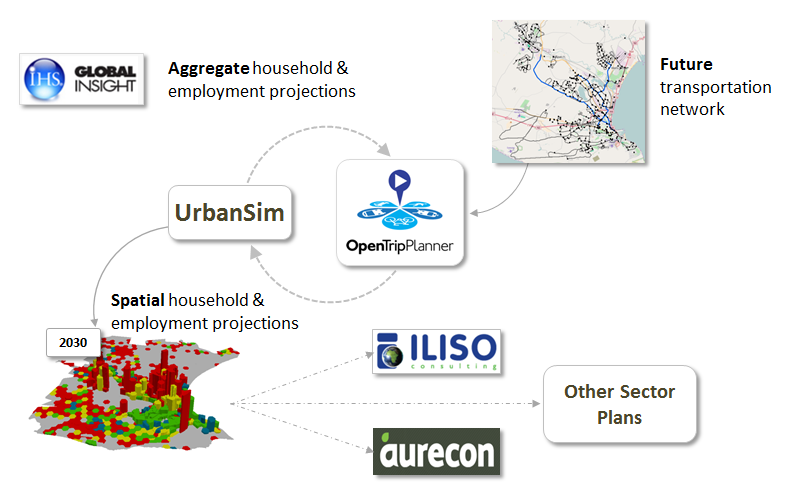
Building on what Makgetla & Levin (2016) have put forward in a comprehensive new working paper from TIPS on the housing/ migration question on the platinum mines, stepSA’s work can perhaps contribute some tentative initial findings. Findings so far, from the project's on-going research into migration and housing in Rustenburg, Madibeng and Lephalale, may give grounds for looking again at the role of housing and services in framing the options for the platinum mining workforce, in terms of the Presidential Initiative for the distressed mining towns (2013). Read more >>

The South African Cities Network reports on the state of South African (largest) cities every five years through the publication of the State of the Cities Report. The latest report released recently highlights the progress made by the country’s eight metropolitan municipalities since 2012. The report monitors city development and service delivery performance against local benchmarks and strategies, national urban development priorities and international development targets. The report sets out to influence national policy and strategy through messages about what is required to achieve the desired urban development outcomes. It is also used to advise and inform the plans and strategies of cities by generating specialised and technical evidence and insights. Read more >>
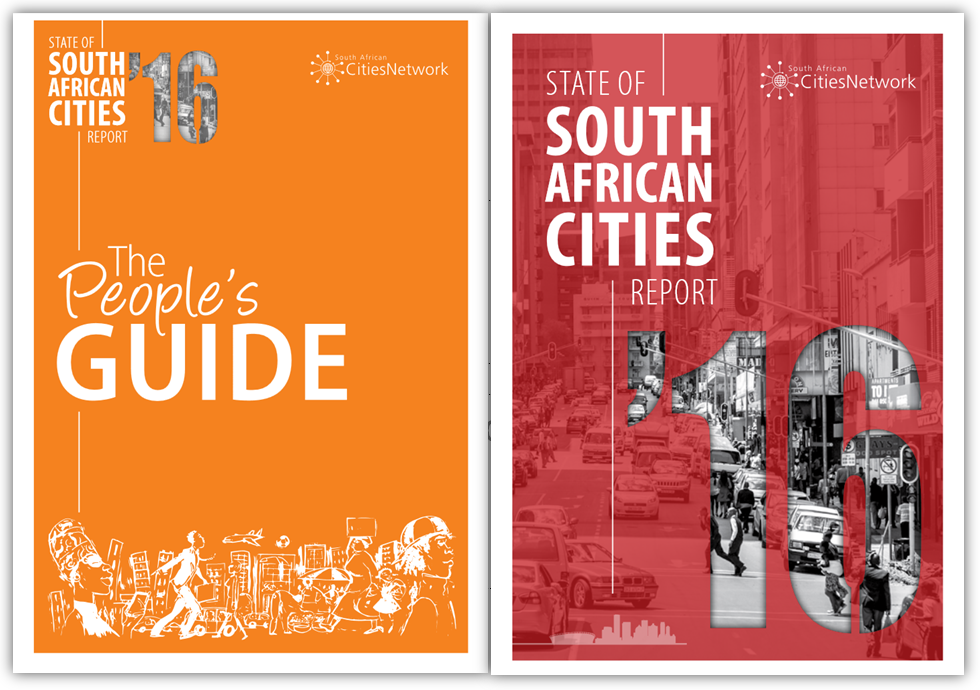
Research and spatial trend analyses (conducted as part of the stepSA initiative) highlights the dynamics of an increasingly youthful population, a growth in households living in poverty, and the fluidity of people-movement between cities, towns and rural settlements. The outputs of this research was recently used to inform the Department of Cooperative Governance’s draft Integrated Urban Development Framework (IUDF). It also provided the basis for an innovative multi-media opening of the South African Cities' Network Urban Conference (2015). Read more >>
Annual Congress on Soil and Water Conservation (ACSWC), 2022
1 - 2 May, Port Elizabeth, South Africa
Western Cape Property Development Forum (WCPDF) 9th annual conference, 2022
26 & 27 May, Cape Town
Southern African Transport Conference, 2022
4 - 7 July
ICSPUD 2022: 16. International Conference on Spatial Planning and Urban Development, 2022
3 - 4 November, Cape Town
ICGTUP 2023: 17. International Conference on Geospatial Technologies in Urban Planning, 2023
15 - 16 April, Cape Town